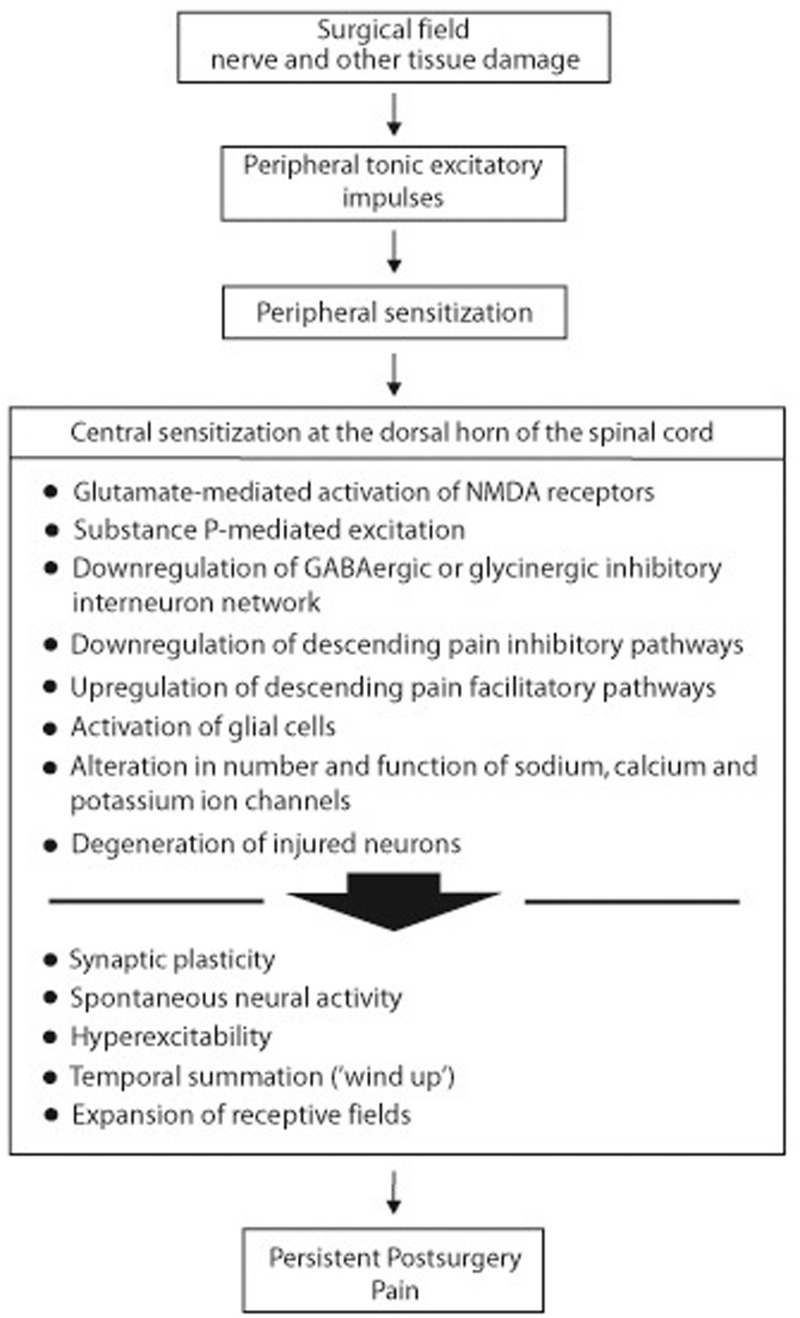Figure 3.
Sequence of postsurgery neural events that may lead to persistent postsurgical pain. Adapted from Dubner, 1997.3 As a consequence of surgery-induced nerve and other tissue damage, a cascade of neural events is generated that includes increased neural activity at the surgical site, peripheral sensitization, and central sensitization with the mediation of persistent postsurgery neuropathic pain. Social, cultural and genetic factors, and cognition, emotions and personality all influence the pain experience (Figure 1). The combination of glutamate-mediated N-methyl-D-aspartate (NMDA) receptor activation, substance P-mediated excitation, downregulation of γ-aminobutyric acid (GABA)ergic or glycinergic inhibitory interneuron network, nerve-injury-induced downregulation of inhibitory and upregulation of excitatory pain descending circuits, activation of glial cells, alteration in the number and function of ion channels, synaptic plasticity, and failure of injured neurons to fully regenerate, disrupts synaptic circuits and neural connectivity at the level of the dorsal horn, leading to central sensitization. Unlike the reversible central sensitization associated with inflammatory pain that resolves with the resolution of the inflammatory process, central sensitization drives and maintains the persistent postsurgery neuropathic and cancer pain.11,26,31

